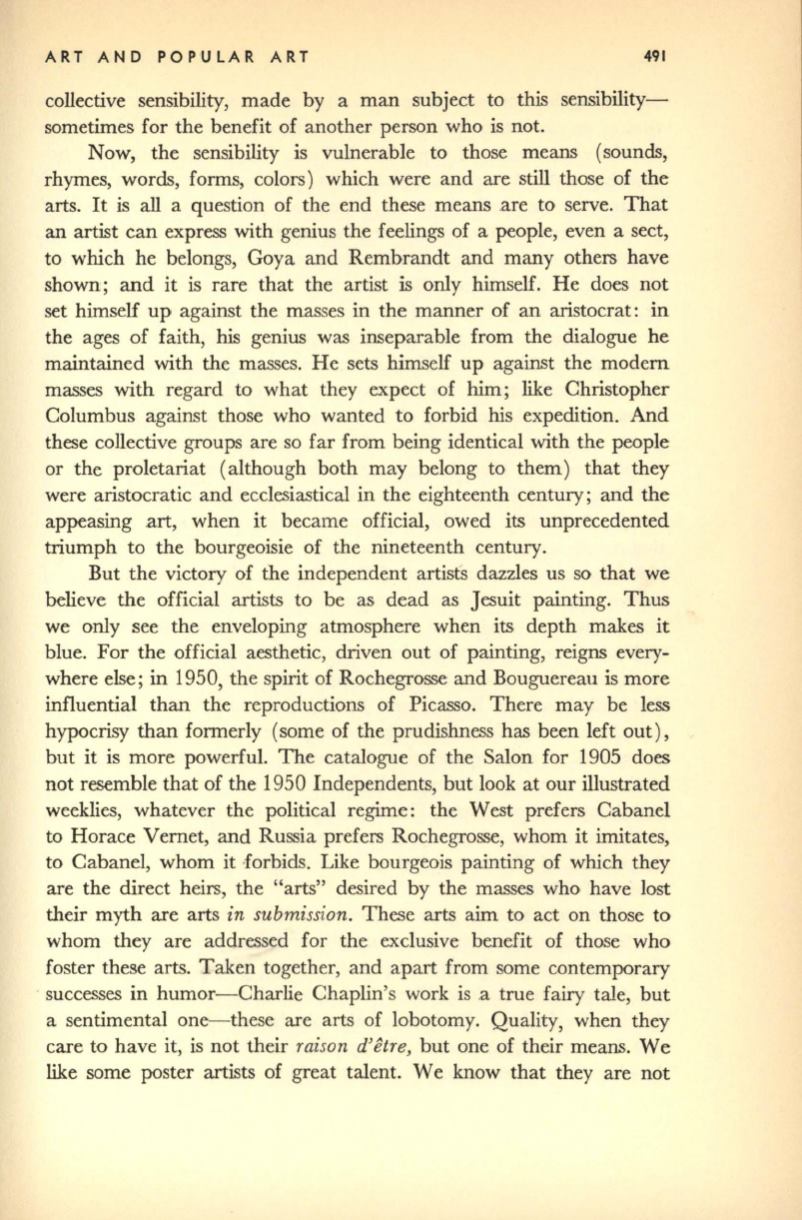
ART AND POPULAR ART
491
collective sensibility, made by a man subject to this sensibility–
sometimes for the benefit of another person who is not.
Now, the sensibility is vulnerable to those means (sounds,
rhymes, words, forms, colors) which were and are still those of the
arts. It is
all
a question of the end these means .are to serve. That
an artist can express with genius the feelings of a people, even a sect,
to which he belongs, Goya and Rembrandt and many others have
shown; and it is rare that the artist
is
only himself. He does not
set himself up against the masses in the manner of an aristocrat: in
the ages of faith,
his
genius was inseparable from the dialogue he
maintained with the masses. He sets himself up against the modern
masses with regard to what they expect of him; like Christopher
Columbus against those who wanted to forbid his expedition. And
these collective groups are so far from being identical with the people
or the proletariat (although both may belong to them) that they
were aristocratic and ecclesiastical in the eighteenth century; and the
appeasing art, when it became official, owed its unprecedented
triumph to the bourgeoisie of the nineteenth century.
But the victory of the independent artists dazzles us so that we
believe the official artists to be as dead as Jesuit painting. Thus
we only see the enveloping atmosphere when its depth makes it
blue. For the official aesthetic, driven out of painting, reigns every–
where else; in 1950, the spirit of Rochegrosse and Bouguereau is more
influential than the reproductions of Picasso. There may be less
hypocrisy than formerly (some of the prudishness has been left out),
but it is more powerful. The catalogue of the Salon for 1905 does
not resemble that of the 1950 Independents, but look at our illustrated
weeklies, whatever the political regime: the West prefers Cabanel
to Horace Vernet, and Russia prefers Rochegrosse, whom it imitates,
to Cabanel, whom it .forbids. Like bourgeois painting of which they
are the direct heirs, the "arts" desired by the masses who have lost
their myth are arts
in submission.
These arts aim to act on those to
whom they are addressed for the exclusive benefit of those who
foster these arts. Taken together, and apart from some contemporary
successes in humor-Charlie Chaplin's work is a true fairy tale, but
a sentimental
one~these
are arts of lobotomy. Quality, when they
care to have it, is not their
raison d'etre,
but one of their means. We
like some poster artists of great talent. We know that they are not


